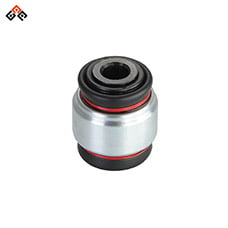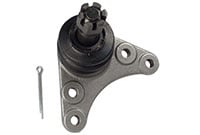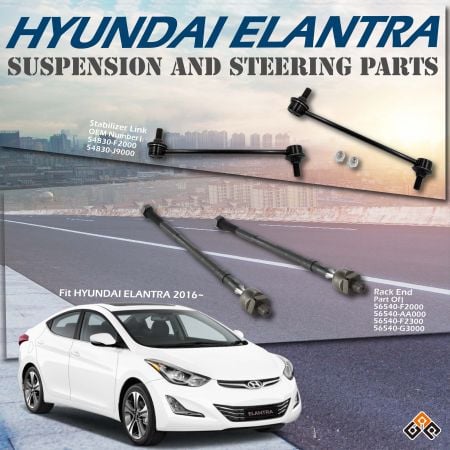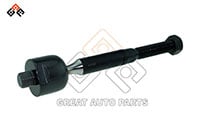Chevrolet Guide: Inner Track Rod End or Tie Rod End?
Understanding the components of your Chevrolet's steering system is crucial for maintaining its performance and safety. Two critical parts often mentioned are the inner track rod end and the tie rod end. Despite their different names, these components are essentially the same.
In Chevrolet vehicles, the inner track rod end is an important element within the steering system. This component connects the steering rack to the steering knuckle, allowing for precise control and stability while driving. By making sure the wheels respond accurately to the driver’s inputs, the inner track rod end significantly impacts the vehicle’s handling and safety. Understanding its function, identifying issues, and maintaining it properly can help keep your Chevrolet running smoothly and safely.
Are Track Rod End and Tie Rod End the Same?
Track rod ends and tie rod ends refer to the same component but are terms used in different regions. American English typically uses "tie rod end," while British English uses "track rod end." Despite the difference in terminology, both refer to the part that connects the steering rack to the steering knuckle, enabling the wheels to turn. This part is important for accurate steering and overall vehicle control.
Terminology
"Tie rod end" is commonly used in the United States, while "track rod end" is used in the United Kingdom.Function
Both terms describe the same part that connects the steering system to the wheels, allowing for precise steering.Wear and Maintenance
Regardless of the term used, this component is subject to wear and tear and requires regular inspection and maintenance to ensure safe and effective steering.
Understanding this can help Chevrolet owners avoid confusion and ensure they maintain their vehicles correctly, regardless of the terminology used.
Impact of Changing Inner Track Rod End on Different Chevrolet Vehicle Types
Chevrolet Sedans
Chevrolet sedans, like the Impala, Malibu, and Cruze, rely on precise steering for a smooth and safe driving experience.
Improved Handling
New inner track rod ends make the steering more responsive, allowing the car to handle better, especially during turns and lane changes.Enhanced Safety
Proper alignment and steering control reduce the risk of steering-related issues, making driving safer.Tire Longevity
Correct alignment prevents uneven tire wear, helping the tires last longer and improving fuel efficiency.
Chevrolet SUVs
Chevrolet SUVs, such as the Equinox, Traverse, and Tahoe, often face varied driving conditions and heavier loads.
Better Control
New track rod ends improve control, making it easier to handle different terrains and road conditions.Reduced Wear
Proper alignment reduces stress on other suspension parts, lowering overall maintenance costs.Enhanced Stability
Improved steering response increases stability, especially during off-road driving or when carrying heavy loads.
Trucks
Chevrolet Trucks
Chevrolet trucks, including the Silverado and Colorado, are built for heavy-duty tasks and towing.
Enhanced Maneuverability
New inner track rod ends restore precise handling, which is crucial when maneuvering large loads.Increased Safety
Reliable steering components are critical for safe driving, especially on rough terrains or when towing.Durability
Proper maintenance, including replacing worn track rod ends, extends the vehicle's life, ensuring it can handle demanding tasks effectively.
Chevrolet Maintenance: Identifying a Bad Inner Track Rod End
The inner track rod end can wear out over time due to regular use and tough driving conditions. Spotting the signs of a failing inner track rod end early can help prevent further damage and keep you safe on the road.
Signs of Wear and Tear
Unusual Tire Wear
If the inner or outer edges of your tires are wearing out faster than the rest, it might be due to a worn track rod end causing alignment issues.Clunking Noises
A worn inner track rod end can make clunking or knocking sounds, especially when turning the steering wheel or driving over bumps. This noise comes from the loose joint moving excessively.Loose or Unresponsive Steering
If your steering feels loose or there's a noticeable delay in response when you turn the wheel, it could be a sign of a failing inner track rod end. This means the part isn't keeping a solid connection between the steering rack and the wheels.Steering Wheel Vibration
If your steering wheel vibrates, particularly at higher speeds, it might indicate a problem with the inner track rod end. This vibration is often due to misalignment caused by the worn joint.
Visual Inspection
Checking the inner track rod end yourself can help you spot any obvious signs of wear or damage. Here’s how you can do it:
Lift the Vehicle
Use a jack to safely lift the front of your vehicle and secure it with jack stands. This makes it easier to inspect the underside.Locate the Inner Track Rod End
Find the inner track rod end on the inner side of the steering rack, connected to the steering knuckle. You might need to remove the wheel for better access.Check for Damage
Look for visible signs of damage like cracks, corrosion, or dirt buildup around the joint. Any of these could mean it's time for a replacement.Test for Looseness
Try to move the inner track rod end. It should have minimal movement. If it feels loose or moves a lot, it’s likely worn out and needs replacing.
Professional Diagnosis
While a visual inspection can be helpful, a professional diagnosis gives a more thorough assessment. Here’s what a mechanic might do:
Road Test
The mechanic might take your car for a test drive to hear and feel the symptoms themselves, like unusual noises or steering looseness.Lift and Inspect
Similar to your visual check, but with specialized tools to inspect the inner track rod end more closely.Steering System Check
The mechanic will inspect the entire steering system, including outer tie rod ends and the steering rack, to make sure there are no other issues.Alignment Check
An alignment check ensures your wheels are properly aligned, which can help identify a faulty inner track rod end.
Importance of Timely Replacement
Ignoring a faulty inner track rod end can lead to serious problems, including complete steering failure. Replacing a worn-out inner track rod end on time is crucial for maintaining the safety and performance of your Chevrolet. Regular maintenance and inspections can catch these issues early, helping you avoid costly repairs and ensuring a smooth, safe driving experience.
Changing the inner track rod end is essential for keeping Chevrolet vehicles in top condition. Whether it's sedans, SUVs, or trucks, this part plays a key role in precise handling, preventing uneven tire wear, and enhancing overall driving safety. Regular inspections and timely replacements can greatly improve driving experience, prolong the vehicle’s life, and reduce maintenance costs. Understanding the impact on different Chevrolet vehicle types helps owners take proactive steps to maintain their vehicles properly.
Main Features of GREAT AUTO PARTS' Tie Rod Ends
- High-Strength Steel: Made from forged high-strength steel for durability.
- Anti-Rust Treatment: Advanced coating protects against rust, extending lifespan.
- Batch Codes: Laser-etched for precise tracking and quality control.
- Superior Strength: Meets or exceeds OE specs for reliable performance.
- Easy Replacement: Direct fit for hassle-free installation.
- Low MOQ: Minimum order quantity of just 30 pieces, ideal for all businesses.






